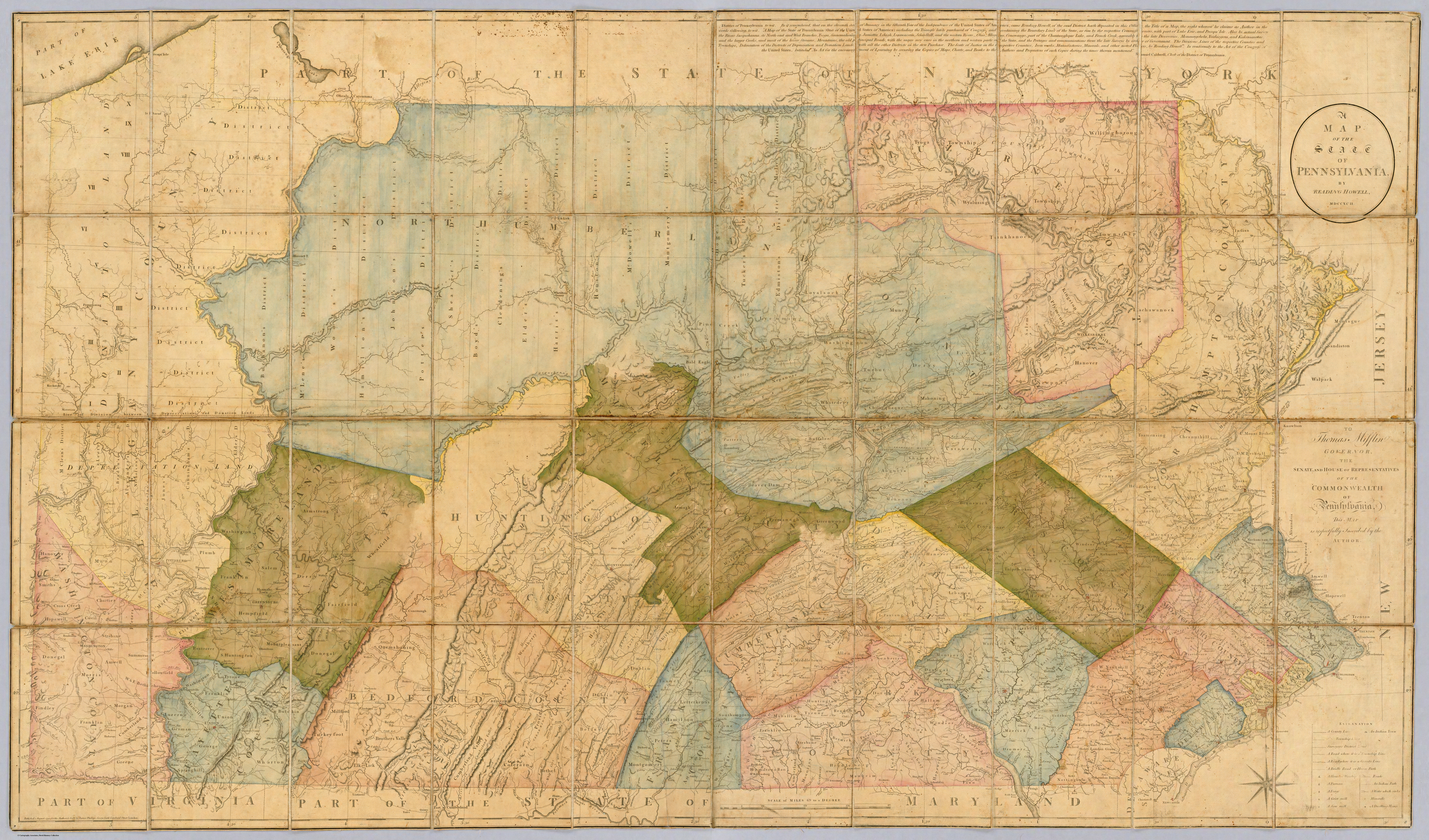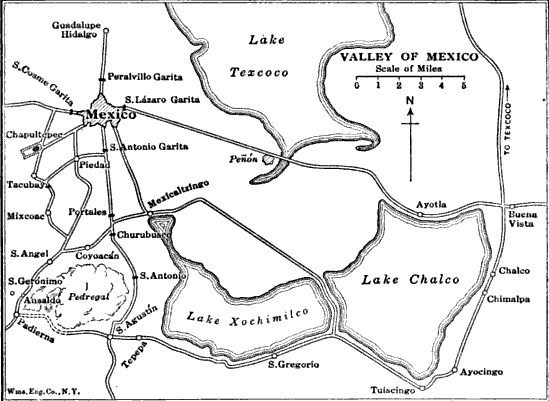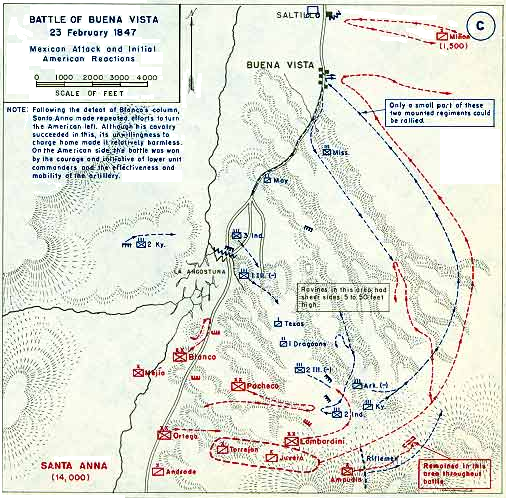|
Peter H. Allabach
Peter Hollingshead Allabach (September 9, 1824 – February 11, 1892) was an officer in the Union Army during the American Civil War. Early life and career Allabach was born in Wilkes-Barre, Pennsylvania and attended the academy there. At the age of 20, he enlisted in Company E, 3rd U.S. Infantry for five years. During his service in the Mexican–American War, he participated in every battle his regiment was in, including the Battle of Vera Cruz, the Battle of Chapultepec, and at the Battle of Contreras, he is noted as planting the first flag in the enemy camp. The only conflict he did not participate in was the battle of Buena Vista.Orwig, Joseph Ray. ''History of the 131st Pennsylvania Volunteers, War of 1861–1865''. Williamsport, PA: Sun Book and Job Printing House, 1902. Pgs. 238–39. He was promoted to sergeant within six months of enlisting and was discharged on November 25, 1849, when his term of service expired.155th Pennsylvania Infantry Regiment. ''Under the Maltese ... [...More Info...] [...Related Items...] OR: [Wikipedia] [Google] [Baidu] |
Wilkes-Barre, Pennsylvania
Wilkes-Barre ( or ) is a city in the U.S. state of Pennsylvania and the county seat of Luzerne County, Pennsylvania, Luzerne County. Located at the center of the Wyoming Valley in Northeastern Pennsylvania, it had a population of 44,328 in the 2020 census. It is the second-largest city, after Scranton, Pennsylvania, Scranton, in the Scranton–Wilkes-Barre–Hazleton, PA Metropolitan Statistical Area, which had a population of 563,631 as of the 2010 United States census, 2010 census and is the fourth-largest metropolitan area in Pennsylvania after the Delaware Valley, Greater Pittsburgh, and the Lehigh Valley with an urban population of 401,884. Scranton/Wilkes-Barre is the cultural and economic center of a region called Northeastern Pennsylvania, which is home to over 1.3 million residents. Wilkes-Barre and the surrounding Wyoming Valley are framed by the Pocono Mountains to the east, the Endless Mountains to the north and west, and the Lehigh Valley to the south. The Susqu ... [...More Info...] [...Related Items...] OR: [Wikipedia] [Google] [Baidu] |
Battle Of Contreras
The Battle of Contreras, also known as the Battle of Padierna, took place on 19–20 August 1847, in one of the final encounters of the Mexican–American War, as invading U.S. forces under Winfield Scott approached the Mexican capital. American forces surprised and then routed the Mexican forces of General Gabriel Valencia, who had disobeyed General Antonio López de Santa Anna's orders for his forces' placement. Although the battle was an overwhelming victory for U.S. forces, there are few depictions of it in contemporary popular prints. The armies re-engaged the next day in the Battle of Churubusco. Background General Gabriel Valencia's army of the north was part of the forces that fought at the Battle of Buena Vista in February 1847, in which Santa Anna retreated before giving a crushing blow to the forces of Zachary Taylor. The Mexican forces were then divided in two, with one sent to Cerro Gordo and the other to San Luis Potosí. General Valencia was given the command of ... [...More Info...] [...Related Items...] OR: [Wikipedia] [Google] [Baidu] |
William Bigler
William Bigler (January 1, 1814August 9, 1880) was an American politician from Pennsylvania who served as a Democrat as the 12th Governor of Pennsylvania from 1852 to 1855 and as a member of the United States Senate for Pennsylvania from 1856 to 1861. His older brother, John Bigler, was elected governor of California during the same period. As of 2022, he is the last Democratic incumbent to lose reelection as Governor of Pennsylvania. Early life and education Bigler was born in Sherman Valley, Pennsylvania, to Jacob and Susan Dock Bigler. He attended public schools and worked as a printer's apprentice, a journalist and as a member of the staff of the ''Centre County Democrat'' newspaper under his elder brother John Bigler who later became the governor of California. Career In 1833, at the urging of his friends, including future Pennsylvania Governor Andrew Curtin, Bigler founded his own political newspaper, the ''Clearfield Democrat'' which supported Jacksonian democracy. In ... [...More Info...] [...Related Items...] OR: [Wikipedia] [Google] [Baidu] |
Governor Of Pennsylvania
A governor is an administrative leader and head of a polity or political region, ranking under the head of state and in some cases, such as governors-general, as the head of state's official representative. Depending on the type of political region or polity, a ''governor'' may be either appointed or elected, and the governor's powers can vary significantly, depending on the public laws in place locally. The adjective pertaining to a governor is gubernatorial, from the Latin root ''gubernare''. Ancient empires Pre-Roman empires Though the legal and administrative framework of provinces, each administrated by a governor, was created by the Romans, the term ''governor'' has been a convenient term for historians to describe similar systems in antiquity. Indeed, many regions of the pre-Roman antiquity were ultimately replaced by Roman 'standardized' provincial governments after their conquest by Rome. Plato used the metaphor of turning the Ship of State with a rudder; the Latin ... [...More Info...] [...Related Items...] OR: [Wikipedia] [Google] [Baidu] |
Luzerne County, Pennsylvania
Luzerne County is a county in the U.S. state of Pennsylvania. According to the U.S. Census Bureau, the county has a total area of , of which is land and is water. It is Northeastern Pennsylvania's second-largest county by total area. As of the 2020 census, the population was 325,594, making it the most populous county in the northeastern part of the state. The county seat and largest city is Wilkes-Barre. Other populous communities include Hazleton, Kingston, Nanticoke, and Pittston. Luzerne County is included in the Scranton–Wilkes-Barre–Hazleton Metropolitan Statistical Area, which has a total population of 555,426 as of 2017. On September 25, 1786, Luzerne County was formed from part of Northumberland County. It was named after Chevalier de la Luzerne, a French soldier and diplomat during the 18th century. When it was founded, Luzerne County occupied a large portion of Northeastern Pennsylvania. From 1810 to 1878, it was divided into several smaller counties. Th ... [...More Info...] [...Related Items...] OR: [Wikipedia] [Google] [Baidu] |
Sergeant
Sergeant (abbreviated to Sgt. and capitalized when used as a named person's title) is a rank in many uniformed organizations, principally military and policing forces. The alternative spelling, ''serjeant'', is used in The Rifles and other units that draw their heritage from the British light infantry. Its origin is the Latin , 'one who serves', through the French term . The term ''sergeant'' refers to a non-commissioned officer placed above the rank of a corporal, and a police officer immediately below a lieutenant in the US, and below an inspector in the UK. In most armies, the rank of sergeant corresponds to command of a squad (or section). In Commonwealth armies, it is a more senior rank, corresponding roughly to a platoon second-in-command. In the United States Army, sergeant is a more junior rank corresponding to a squad- (12 person) or platoon- (36 person) leader. More senior non-commissioned ranks are often variations on sergeant, for example staff sergeant, gunn ... [...More Info...] [...Related Items...] OR: [Wikipedia] [Google] [Baidu] |
Battle Of Buena Vista
The Battle of Buena Vista (February 22–23, 1847), known as the Battle of La Angostura in Mexico, and sometimes as Battle of Buena Vista/La Angostura, was a battle of the Mexican–American War. It was fought between the US invading forces, largely volunteers, under General Zachary Taylor, and the much larger Mexican Army under General Antonio López de Santa Anna. It took place near Buena Vista, a village in the state of Coahuila, about south of Saltillo, Mexico. ''La Angostura'' ("the narrow place") was the local name for the site. The outcome of the battle was ambiguous, with both sides claiming victory. Santa Anna's forces withdrew with war trophies of cannons and flags and left the field to the surprised U.S. forces, who had expected there to be another day of hard fighting. Background U.S. President James K. Polk had decided that an invasion into central Mexico via the Gulf Coast port of Veracruz would make the Mexicans come to the negotiating table. He told Major Ge ... [...More Info...] [...Related Items...] OR: [Wikipedia] [Google] [Baidu] |
3rd United States Infantry Regiment (The Old Guard)
The 3rd United States Infantry Regiment is a regiment of the United States Army. It currently has three active battalions, and is readily identified by its nickname, The Old Guard, as well as Escort to the President. The regimental motto is ''Noli Me Tangere'' (from Latin: – "Touch Me Not"). The regiment is a major unit of the Military District of Washington (MDW). The 3rd is the oldest regiment still active in the Regular Army, having been first organized as the First American Regiment in 1784. It has been the official ceremonial unit of the U.S. Army since 1948. Mission The regiment's mission is to conduct memorial affairs to honor fallen comrades and ceremonies and special events to represent the U.S. Army, communicating its story to United States citizens and the world. Although The Old Guard primarily functions in a ceremonial role, it is an infantry unit and thus required to meet standards for certification in its combat role. The unit also trains for its support ro ... [...More Info...] [...Related Items...] OR: [Wikipedia] [Google] [Baidu] |
Battle Of Chancellorsville
The Battle of Chancellorsville, April 30 – May 6, 1863, was a major battle of the American Civil War (1861–1865), and the principal engagement of the Chancellorsville campaign. Chancellorsville is known as Lee's "perfect battle" because his risky decision to divide his army in the presence of a much larger enemy force resulted in a significant Confederate victory. The victory, a product of Lee's audacity and Hooker's timid decision-making, was tempered by heavy casualties, including Lt. Gen. Thomas J. "Stonewall" Jackson. Jackson was hit by friendly fire, requiring his left arm to be amputated. He died of pneumonia eight days later, a loss that Lee likened to losing his right arm. The two armies faced off against each other at Fredericksburg during the winter of 1862–1863. The Chancellorsville campaign began when Hooker secretly moved the bulk of his army up the left bank of the Rappahannock River, then crossed it on the morning of April 27, 1863. Union cavalry under ... [...More Info...] [...Related Items...] OR: [Wikipedia] [Google] [Baidu] |
Battle Of Fredericksburg
The Battle of Fredericksburg was fought December 11–15, 1862, in and around Fredericksburg, Virginia, in the Eastern Theater of the American Civil War. The combat, between the Union Army of the Potomac commanded by Maj. Gen. Ambrose Burnside and the Confederate Army of Northern Virginia under Gen. Robert E. Lee, included futile frontal attacks by the Union army on December 13 against entrenched Confederate defenders along the Sunken Wall on the heights behind the city. It is remembered as one of the most one-sided battles of the war, with Union casualties more than twice as heavy as those suffered by the Confederates. A visitor to the battlefield described the battle as a "butchery" to U.S. President Abraham Lincoln. Burnside's plan was to cross the Rappahannock River at Fredericksburg in mid-November and race to the Confederate capital of Richmond before Lee's army could stop him. Bureaucratic delays prevented Burnside from receiving the necessary pontoon bridges in time ... [...More Info...] [...Related Items...] OR: [Wikipedia] [Google] [Baidu] |
Battle Of Antietam
The Battle of Antietam (), or Battle of Sharpsburg particularly in the Southern United States, was a battle of the American Civil War fought on September 17, 1862, between Confederate Gen. Robert E. Lee's Army of Northern Virginia and Union Gen. George B. McClellan's Army of the Potomac near Sharpsburg, Maryland and Antietam Creek. Part of the Maryland Campaign, it was the first field army–level engagement in the Eastern Theater of the American Civil War to take place on Union soil. It remains the bloodiest day in American history, with a combined tally of 22,717 dead, wounded, or missing. Although the Union army suffered heavier casualties than the Confederates, the battle was a major turning point in the Union's favor. After pursuing Confederate States Army, Confederate Gen. Robert E. Lee into Maryland, Major general (United States), Maj. Gen. George B. McClellan of the Union Army launched attacks against Lee's army who were in defensive positions behind Antietam Creek. At ... [...More Info...] [...Related Items...] OR: [Wikipedia] [Google] [Baidu] |
American Civil War
The American Civil War (April 12, 1861 – May 26, 1865; also known by other names) was a civil war in the United States. It was fought between the Union ("the North") and the Confederacy ("the South"), the latter formed by states that had seceded. The central cause of the war was the dispute over whether slavery would be permitted to expand into the western territories, leading to more slave states, or be prevented from doing so, which was widely believed would place slavery on a course of ultimate extinction. Decades of political controversy over slavery were brought to a head by the victory in the 1860 U.S. presidential election of Abraham Lincoln, who opposed slavery's expansion into the west. An initial seven southern slave states responded to Lincoln's victory by seceding from the United States and, in 1861, forming the Confederacy. The Confederacy seized U.S. forts and other federal assets within their borders. Led by Confederate President Jefferson Davis, ... [...More Info...] [...Related Items...] OR: [Wikipedia] [Google] [Baidu] |






